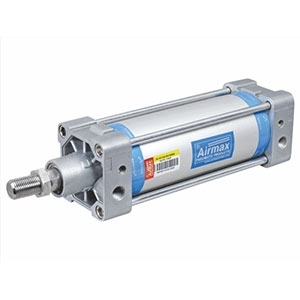Understanding Pneumatic Cylinders: Working, Types, and ApplicationsPosted by Airmax Pneumatics on April 21st, 2023  Pneumatic cylinders are widely used in the manufacturing and automation industries for their ability to convert compressed air into linear motion. In this blog, we will discuss the working, types, and applications of pneumatic cylinders in detail. What is a Pneumatic Cylinder?A pneumatic cylinder is a mechanical tool that uses compressed air energy to provide linear motion-based mechanical energy. It consists of a piston, a cylinder, and a valve that controls the flow of compressed air into the cylinder. When compressed air is supplied to the cylinder, the piston moves back and forth, creating linear motion. Types of Pneumatic CylindersThere are several types of pneumatic cylinders available in the market, each with its unique features and applications. Some of the most common types include:
How do Pneumatic Cylinders work?Pneumatic cylinders work on the principle of Boyle's law, which states that the pressure and volume of a gas are inversely proportional. When compressed air is supplied to the cylinder, it fills the space behind the piston, creating pressure that moves the piston forward. The valve then opens, releasing the compressed air, and the piston returns to its original position due to the force of the spring. Applications of Pneumatic CylindersPneumatic cylinders are used in a wide range of applications, from simple tasks like opening and closing doors to complex manufacturing processes. Some common applications of pneumatic cylinders include:
In conclusion, pneumatic cylinders are versatile devices that have found extensive use in various industries for their ability to convert compressed air into linear or rotational motion. Understanding the working and types of pneumatic cylinders can help in selecting the appropriate type for a given application, leading to better efficiency and productivity. Like it? Share it!More by this author |


